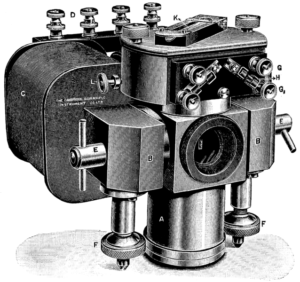Outwards from June – Report 1: Intriguing Capture Device – Consider the Oscilloscope

A few weeks ago, I learned about Oscilloscopes, (I think I had heard about them years before in a physics class, but at that time quickly forgot about them). Technically, they are electronic test instruments that display voltage variation over time. Oscilloscopes capture variation in electric signals using various methods (which could be a post for another time). Oscilloscopes are useful in many different situations as tools that help people understand how electric signals are changing – people use oscilloscopes for troubleshooting automotive systems or even to display heartbeats as electrocardiograms.


My personal interest in oscilloscopes is related to visualizing sound waves, ‘sound’ being famously hard to ‘see,’ besides the fact that human ears, or auditory receptors, are not attuned to perceive all the sounds, or rather, vibrations that exist in our surroundings.

I really enjoy the idea of finding ways of translating sounds and vibrations into something visual. Of course, we have ways of perceiving vibrations, but it’s interesting to use a tool so that we can get another perspective or vantage point on that better illuminates how those vibrations behave. How might oscilloscopes be more effective? What the creators of the oscilloscope got right is that it’s an amazing analytical tool both to tune and troubleshoot with – I think it’s underexplored potential is as a creative tool. I was reading about William Duddell, who’s credited as the inventor of ‘the moving coil oscillograph’, which is a precursor to the oscilloscope. Apparently little William was some kind of prodigy who at only 4 years old transformed a toy mouse into an automaton by embedding clockwork within it. Duddell also is one of the first people to have created electronic music, using a device called the ‘singing arc,’ one of the first electronic oscillators. Duddell used his oscillograph creatively to play God Save the Queen and in doing so demonstrated that he could use his oscillograph to determine the precise conditions required to produce oscillations (and produce them in the sequence of a tune by wiring them to a keyboard). Some of the motivations for Duddell in making his oscillograph are linked to the fact that arc lamps which lit the streets made ‘audible humming, hissing, or even howling sounds,’ which was not ideal, so measuring the instability in their current was helpful and Duddell’s oscilloscope could do just that.

I became interested in visualizing sound recently, after being captivated by a passage in the book When We Cease to Understand the World by Benjamin Labatut. In it, there’s a mention of Johannes Keplerwho believed that there’s a melody produced by planets in motion around the sun. He called it the music of the spheres and thought that though human ears couldn’t hear this music, the human mind would be able to understand it. I thought the idea of the cosmic music of the spheres was so beautiful that I investigated it further and found that tons of artists and musicians have referenced it. One of my favorite passages is from a Lovecraft story — “His ears seemed at times to catch a faint, elusive susurrus which could not quite be identified with the nocturnal hum of the squalid streets outside, and he thought of vague, irrelevant things like the music of the spheres and the unknown, inaccessible life of alien dimensions pressing on our own.”
I’ll leave this at that for now!
P.S. please forgive me for violating the new media rules of the ‘looking outwards’ report as I have technically seen this tool before, but it was only a few weeks ago and I’ve been very interested in it since and have wanted to share it with people who it might also inspire (maybe we can someday work on a project together!)